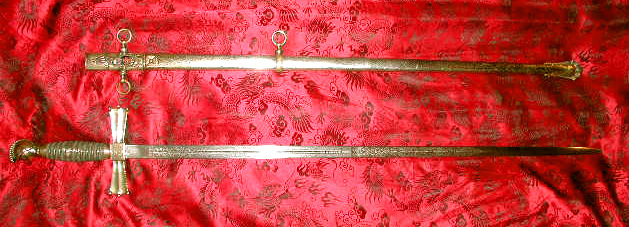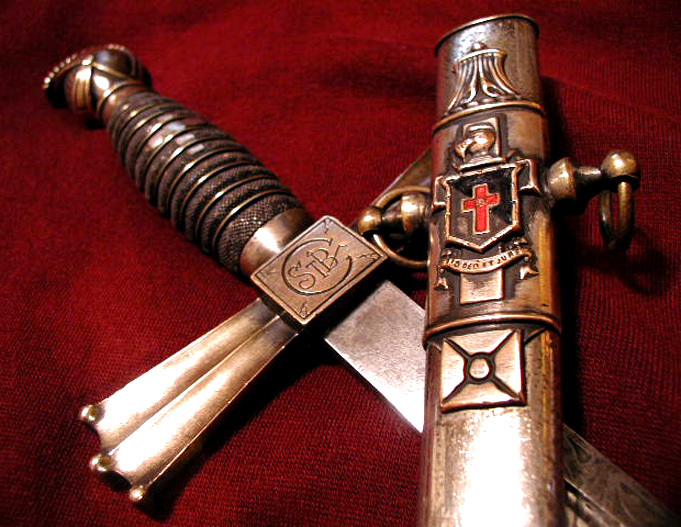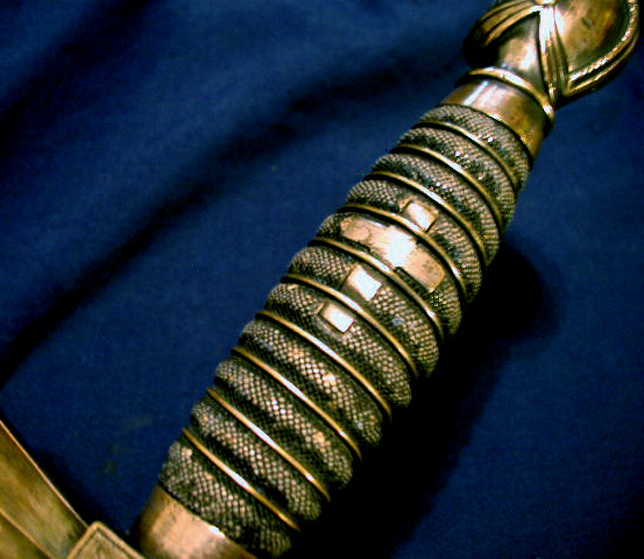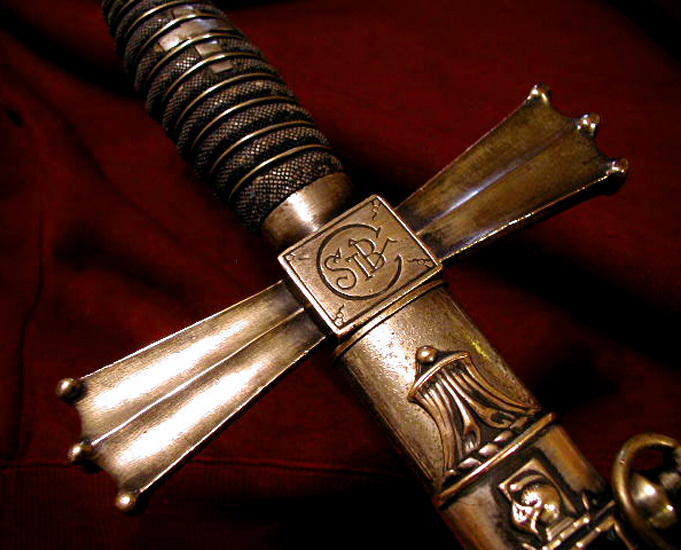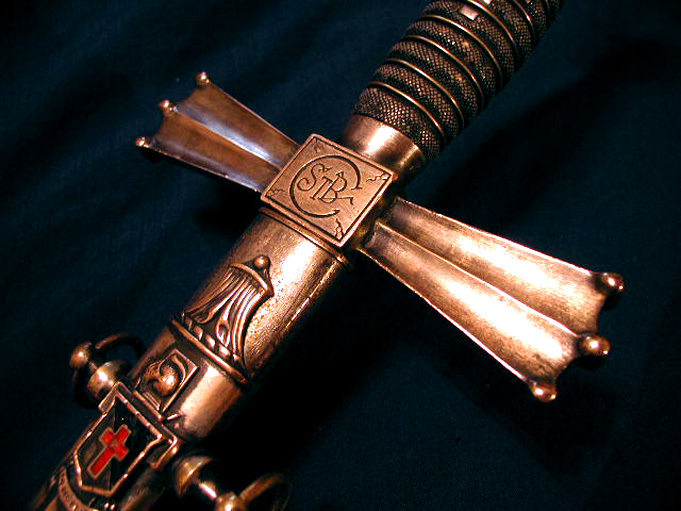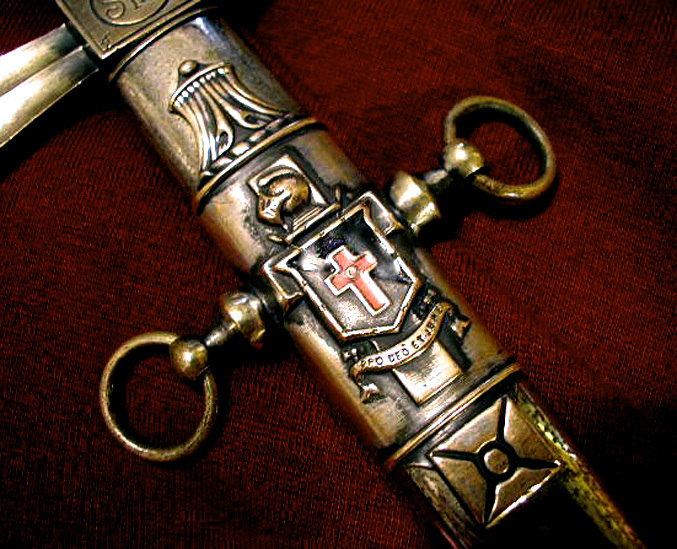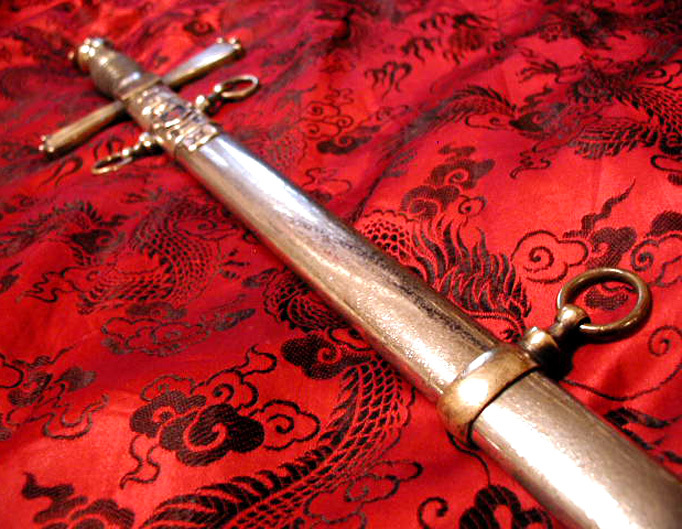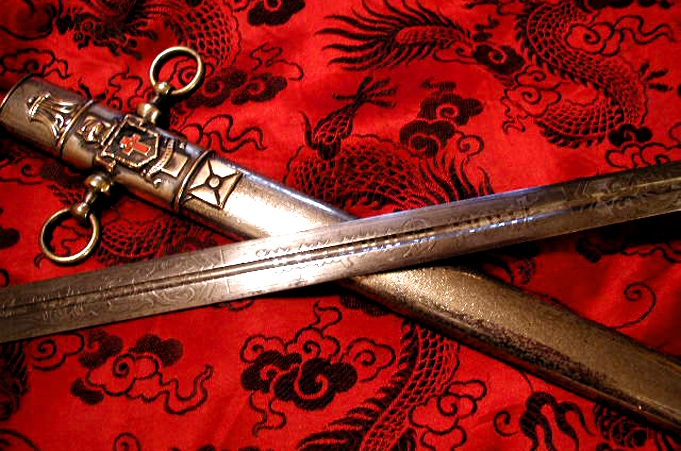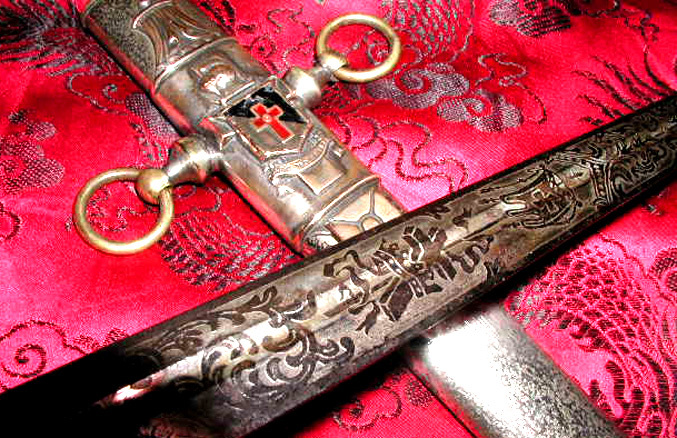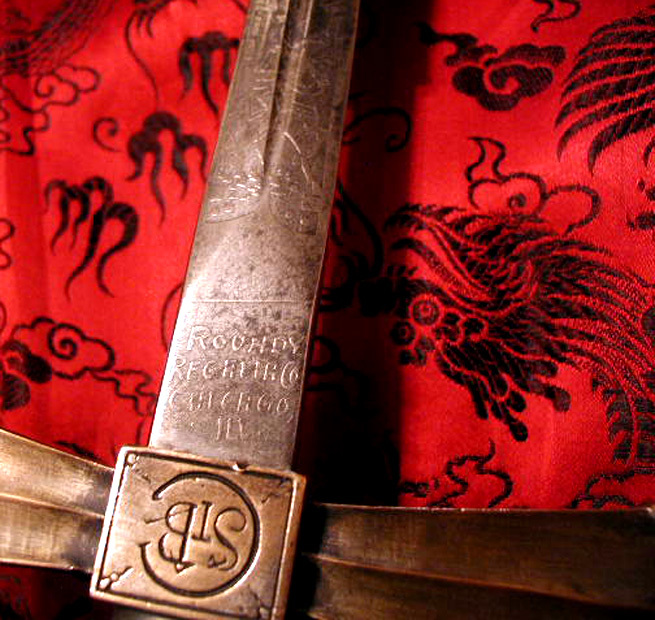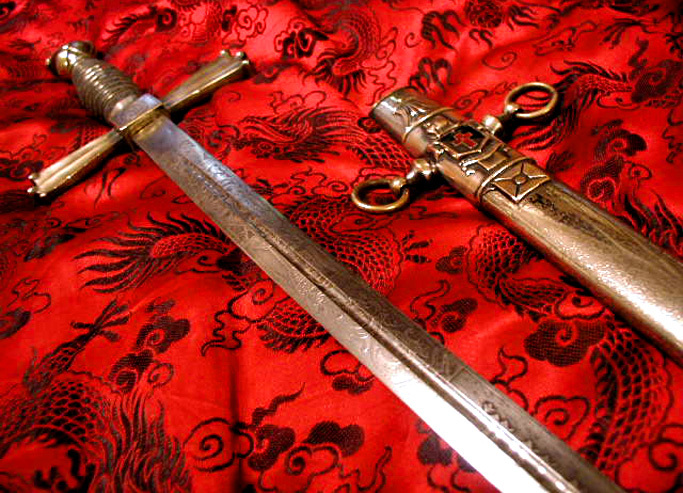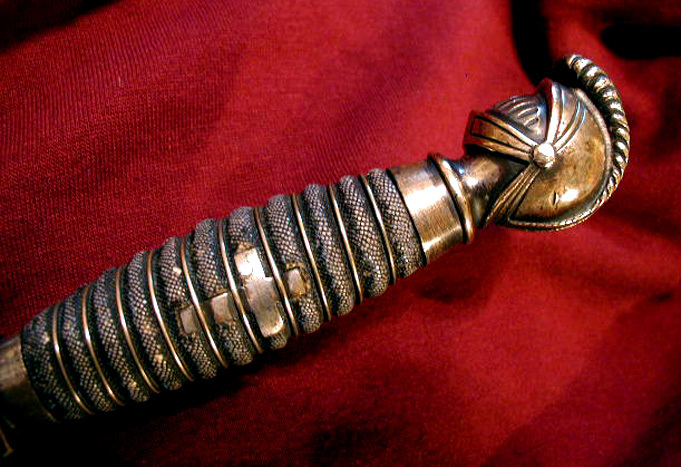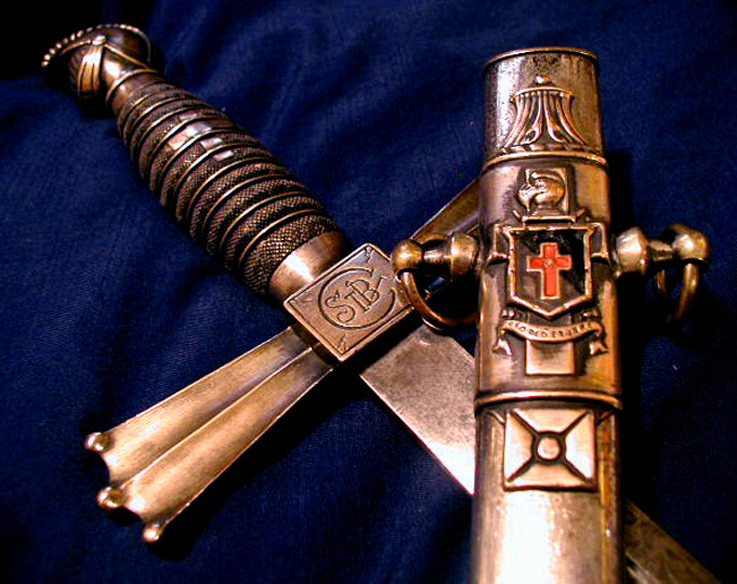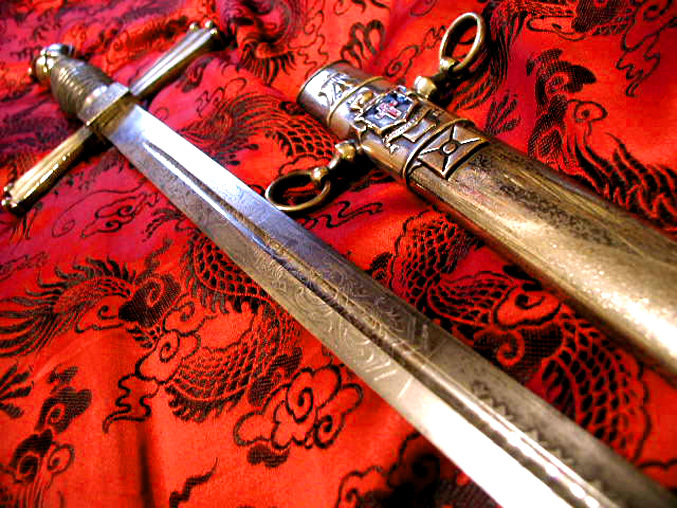
Espada templaria de San Bernardo, pieza rarísima con hoja de forja, grabados y bronces con altorrelieves. Espada templaria de San Bernardo, pieza rarísima de un comandante o maestre. Esta espada se diferencia notablemente de las demás templarias por su calidad de factura y por utilizar una estética muy diferenciada llena de simbolismos. La contera y los gavilanes que forman cruz y guarda tienen la forma palmípeda que evoca la esotérica "pata de oca", tan importante en la icononografía simbólica templaria. La vaina es de acero de buena calidad con la contera, abrazaderas, adornos y brocal en bronce labrado y latón con altorrelieves, de excelente calidad, cerca del brocal tiene el escudo de la cruz caballeresca esmaltado, bajo el mismo la leyenda: "Pro Deo et Jure". La guarnición también es de buen bronce con el pomo en forma de yelmo con la celada baja y cimera, el puño está recubierto de piel de lija ceñida por un torzal de cobre dorado y con una cruz de plata incrustada. La hoja de extraordinaria calidad, con un vaceo o canal central que parte de una larga bigotera o base de la hoja y recorre las cuatro quintas partes de la misma, es de acero forjado grabada y cincelada con finos motivos caballerescos, precisos y de gran valor artístico. San Bernardo de Claraval. Tenía al menos dos pariente próximos entre los nueve fundadores del Temple (Hugo de Payns y Andrés de Montbard, que era su tío), es posible que fuera realmente el instigador de la nueva Orden. Precio: 1.180 euros.
St Bernard templar sword, very rare. This Sword is rare and important. Out of the hundreds of different sword designs used for Templar Swords, the only time we have encountered this very outstanding and uncommon prototype was for swords made exclusively for the “St Bernard Commandery”. The great Rayskin Grip, the unique Fin-like Hand-Guard and the Bold type of Pommel was seen on not one other sword used by any other Commandery. Only the “St Bernard Commandery”. There is a great legacy to the name of this Commandery. A vital connection to the history of the ancient Warrior-Monks and their intriguing plight. This unique collector’s Sword probably dates back to the 1870’s or 1880’s. Stylistically, it has the look of the 1870’s. For being so old, it is in considerably good vintage condition, but it is not mint. There is expected wear here and there. For the most part the surface of the scabbard does have what we believe is called oxidation freckling and spotting. Still, the scabbard is bright and glows. The Sword is very solid and quite substantial. Because there are several Brass elements, we suspect that this was made for a Commanding Officer of the Order. While Gold for the most part distinguishes an Officer’s sword from that of a Sir Knight, during the earlier periods, some Commanderies used what they call “Gilt Brass”. The Military-style Blade is etched and engraved with most skillful precision both inside and surrounding the fuller (or blood groove). As typical of many Swords from this earlier period, the tip of the blade is rounded to prevent injury. The name of the original owner is there as is the logo of the maker. We are not all that familiar with the francmason maker: “Roundy Regalia”. Measures around 38,6 inches. Saint Bernard of Clairvaux. One of the most important sponsers of the Knights Templar, Saint Bernard, the Abbot of Clairvaux was born at Fontaines, France in the year 1090 and both lived and died (1153) in Clairvaux, near Troyes. He was one of the most prominent monks and religious figures of Medieval Europe. Price: 1.180 euros. |

